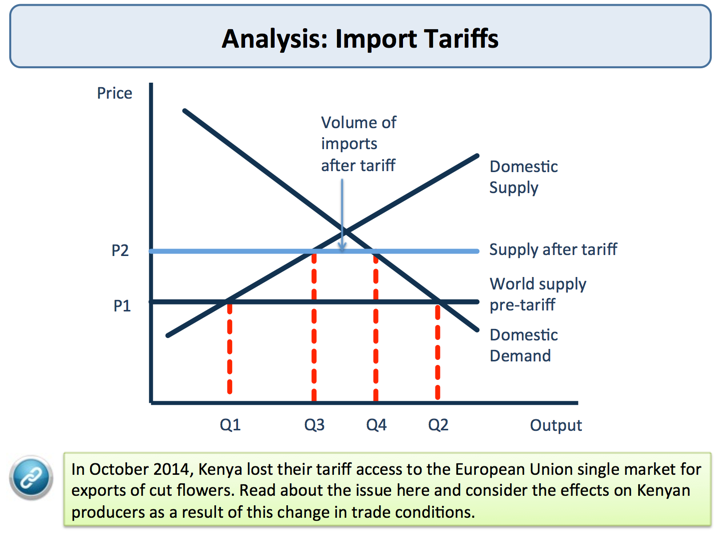Protectionism is any attempt to impose restrictions on trade in goods and services.
Economic:


Types of protectionist barriers:
Economic:
- Tariffs - tax on imports.

- Subsidies - payment by the government to domestic firms in order to reduce the price of domestic products so they undercut imports.
- Quotas - a limit on the quantity of a certain import.
With quotas, as supply is limited, prices increase. Often this increase offsets the reduction in quantity sold. This means foreign firms could potentially profit from quotas. Similarly, this is why they may self-impose a voluntary import restraint.
However, the government is better off imposing tariffs as with quotas they do not collect any tax revenue.
- Voluntary export restraint - when a country sets a limit on quantity at the point of export (self-imposed).
- Regulation - this limits the quantity of a good/service imported or makes it more expensive and so less competitive. often officially the regulation is for health and safety or environmental reasons.
Political:
- Bans - banning imports of certain products altogether.
- Trade embargoes/sanctions - embargoes are a full ban, sanctions are not. usually imposed for political reasons.
Comments
Post a Comment